- Revillagigedo Archipelago, Mexico (better known as Socorro) consisting of 4 volcanic islands; San Benedicto, Roca Partida, Socorro and ClariÓn.
- What to see: Giant oceanic mantas, bottlenose dolphins, sharks (white tip, silky, silver tip, hammerhead, galapagos, whale and more), humpback whales.
- Level: Advanced, at least 50 dives because of deep dives and strong currents. Most boats allow people with less experience, I think it makes more sense to gain experience first to be able to fully enjoy the dives.
- How to get there: Flight to Cabo San Lucas, Baja California, Mexico, from there one out of 7 liveaboards. The islands are about 400 km (250 mi) from Cabo San Lucas, meaning 24 hours on sea to San Benedicto.
- Water temperature: 26-27°C (78-82F) in Nov-Dec, 21-24°C (70-74F) in Jan-Mar, 24-26°C (76-80F) Apr-May.
- Visibility: 30 m (100 ft) or more normally, depending on the conditions the visibility might drop as well.
- Season: Nov-May (whale sharks Nov-Dec, May; humpback whales Feb-Mar).
- Price: USD 3000-3500 for 7 nights, 6 diving days.
- My trip: I chose the liveaboard Southern Sport, which I can highly recommend. The rooms are basic but the crew is fantastic and the dive deck has all you need. During the Whale Season the boats sell out very quickly. I booked 1 month in advance and was lucky as they had some cancellations on this trip
We were picked up in our Hotels in Cabo San Lucas at 10.30 am, making sure everyone was ready by 1 pm when the boat was to leave the marina. After boarding I had to go back on land to rent a wetsuit as I only have a 3mm suit which keeps me warm down to 25°C (80F); however the water might be colder and I decided to get a 7mm wetsuit, just to be sure. Just outside of the bay we saw a humpback whale with a calf breaching.
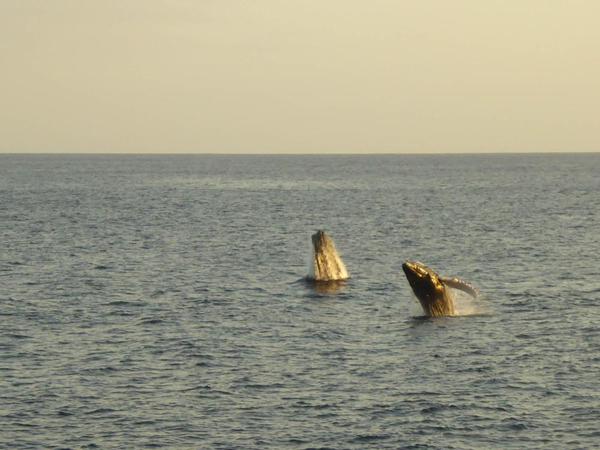 (Humpback Whales breaching)
(Humpback Whales breaching)We interpret this as a good sign for our upcoming dive trip. Before we got to dive however, we had to spend 22 hours on board of the “Southern Sport” till we reached the first island. We were lucky as the weather was nice and the sea flat for the crossing. During the next hours we attended first a general briefing and introduced ourselves to the other guests as well as the crew. We were 16 divers and 7 crew members. The wonderful chef Paloma prepared the most delicious food for our lunch and it did not present the slightest problem for her to create great vegan food for me throughout the whole week we were on board.
Out of the 4 volcanic islands that represent the Revillagigedo Archipelago (158 km2, 60 mi2) Socorro is the biggest (132 km2, 51 mi2) while Roca Partida is just a rock sticking out of the water. The other two islands San Benedicto and ClariÓn are somewhere between. ClariÓn is even further out in the Pacific and we did not dive there. All 4 islands resulted from volcanic eruptions. The last eruption occurred in 1993 in Socorro. It is not known when Roca Partida was formed but erosion over thousands of years has just left a bare rock. All the islands are uninhabited except for naval bases on Socorro with about 45 people and on ClariÓn with 9. The region is home to many endemic plant and animal species due to its isolation from mainland, and consequently it is also called the Galapagos of Mexico. The Mexican government established the islands as a biosphere reserve in 1994. Most endemic animals are birds (14 out of 16 species). The biggest threat for the endemic fauna and flora are introduced species (of course, like always) such as cats, sheep and exotic birds. Yes, there are actually cats living on Socorro!
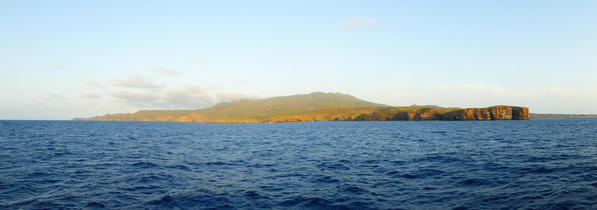 (Socorro Island)
(Socorro Island)We were told the whalers brought them back in the days when they were living on the island and without natural predators the cats have proliferated. The area does have some endemic fish species as well as coral and crustacean such as the orange clarion, a cleaner fish, which helps the mantas and other big fish get rid of parasites. The biodiversity of fish is very high in the area as well with at least 321 species, including 20 species of shark and five species of ray. As the main threat to the marine life in the area is commercial fishing, the Mexican government prohibited this in 2002 to protect this very unique marine biosphere (Socorro Island Conservation).
We arrived at San Benedicto the next morning around 11 am. The island does indeed look volcanic and the dark lava stones are covered in ash, a stunning scenery. After the dive briefing we finally climbed into the dinghies which took us to our first dive site called El Boiler. The divers on the boat were divided into two groups in separate dinghies with a guide each. The Boiler is a pinnacle and causes the waves to break over it so it looks like the water is boiling, hence the name. Shortly after jumping in we saw the first oceanic manta (manta birostris). These giants can reach up to 7 m (22 ft) across the pectoral fins. We had been told that they were very friendly although I did not expect them to come as close and just hang out with us. They swam between the divers and seemed to like the bubbles on their belly. I had never seen mantas doing this before and I was deeply impressed. What a check-out dive! Our second dive of the day brought us back to the same dive site which we are all happy with of course. There were more mantas, one of which stayed during the whole dive just swimming between and around us. So I should definitely have enough opportunities to get a good picture of one! I am still figuring out camera settings for big stuff using a wide angle lens.
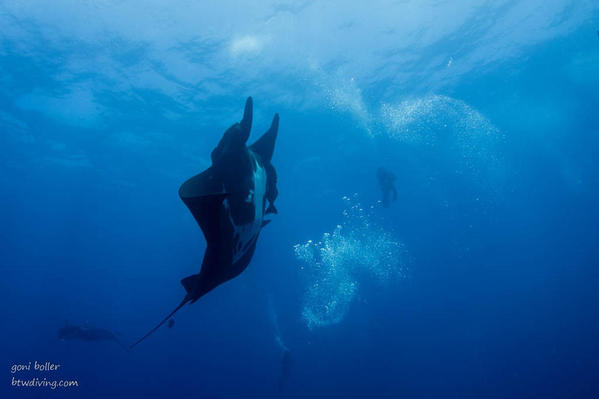 (Diving with the Mantas)
(Diving with the Mantas)The mantas swim straight towards the divers and then up and above or they let us swim alongside making eye contact. I have never encountered anything like it. Normally the mantas are rather shy and swim off when anyone gets too close to them. Between the dives we saw several humpback whales breaching and passing by. I so hoped we would be able to see them during the dives. The best time to see the whales is February and March, although they can be seen as early as January right through to the middle of April.
The next day we stayed at San Benedicto to explore a dive site named El Cañon (canyon) during 4 dives. During the first dive we met a group of about 10 playful bottlenose dolphins. They seem to enjoy diving with humans, swam around us, turned upside down and waited so the slow humans could catch up with them. This might be the part I enjoyed most about diving in Socorro. I will never forget the look in their eyes when they swam up to me for the first time. They do make eye contact and check out how the diver reacts to what they do.
Diving with the dolphins as well as the mantas was truly magical, mystical experiences that happen only rarely. To be allowed, even for a only short while, to become a part of this other world (their world) was something I will never forget. We were not just visitors but seemed to be more like welcome guests whose company was sought and enjoyed. It was truly amazing and worth all the effort in being there. How could anyone not love these beautiful creatures and want to share time with them?
After a surface interval of about 2 hours and breakfast we jumped in for the second dive and immediately heard humpback whales. I removed my hood in order to hear them better, this seemed much more important than being warm. The sounds can be heard over a long distance and when the whales come very close it is possible to even feel it. During the dive the singing became louder and louder and we could differentiate a mother and a calf. Our whole group was nervously looking in all directions hoping that the whales would suddenly appear out of the blue. I could definitely feel the vibration of their singing in my body. However, after a moment the sounds got quieter again. Besides diving with dolphins and hearing whales we found different sharks (silkies, white tips and hammerheads) as well as some mantas while diving in the canyon. Between the dives we had a chance to snorkel with the silky sharks circling under our boat.
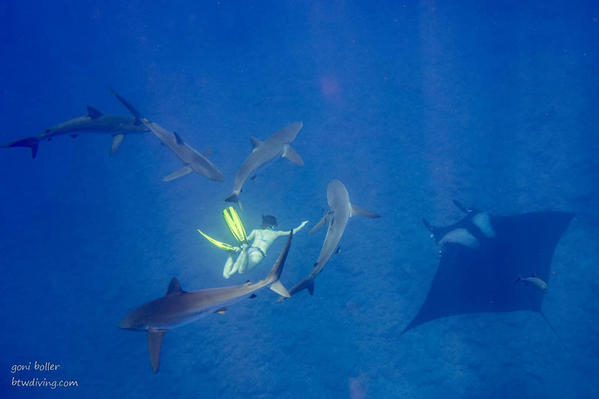 (Snorkelling with Silkies)
(Snorkelling with Silkies)When it gets dark in the evenings there is a lot of activity under and next to the boat as well. The lights attract plankton which attract bigger fish and so on. We saw silkies around the boat every night and heard fish jumping from time to time. Our days started at 6 am when someone knocked at our doors. We had a quick breakfast followed by the dive briefing before we had to be ready for a dive at 7 am. The dive time is, at most, 50 minutes. Because we were swimming into the current and playing with the animals as well, these rather deeper dives meant our air would not last much longer than this. It is also important to stick to the times as the different live-aboards time their dives to make sure that only one group is at the dive site at the same time. This is very much appreciated by all the divers as when the two dinghies from our boat (all 16 divers) ended up in the same place watching mantas it got too crowded and there were too many bubbles to enjoy the giants. After we dried off from the first dive proper breakfast was served. The next dives are scheduled for 10 am, 1 pm and 4 pm with lunch between the 3rd and the 4th dive. After the last dive we mostly sat on the top deck enjoying a beer. Before the dives it is not allowed to drink, which is the same wherever you go and surprisingly it works almost all the time. Dinner is served around 7 pm and most of us go to bed early. Four dives a day do make you tired. Sleep, eat, dive, repeat – the perfect lifestyle.
The evening of the second day we left San Benedicto to reach Roca Partida, which is 140 km (85 mi), away in the early morning. I was surprised how small the “parted rock” was, somehow I expected a more impressive rock formation. We were the second boat to arrive at the only 100 m (300 ft) long, 8 m (26 ft) wide and 30 m (100 ft) high “island”.
Due to its small size it is possible to swim around the rock during one dive depending on the current. Therefore this place is only considered as one dive site which makes the coordination between the boats even more important. The steep walls continue underwater down to about 70 m (230 ft) with a lot of wildlife around them. Amazingly even the rock above the water is inhabited by different bird species and one single female sea lion. The main marine life to be encountered here are different types of sharks (white tip nursery, silver tips, silkies, schools of hammerheads, galapagos), mantas, schools of jacks and tuna. We saw all of this ![]()
Some of the yellowfin tuna we saw are even bigger than the silkie sharks who are mostly seen following schools of small fish. These schools build a ball as a defence mechanism; these are also called baitballs. The sharks follow the baitball around and hope for a weak fish to lose the group and become an easy prey.
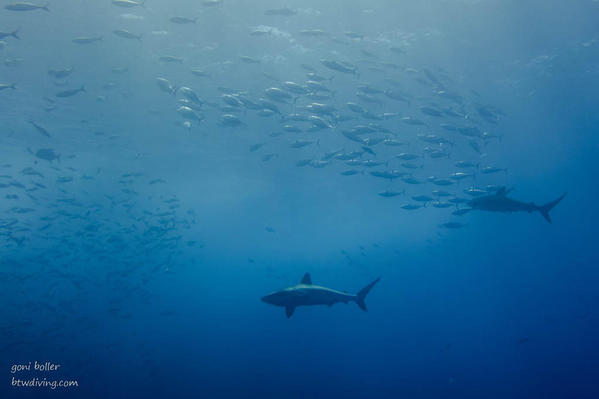 (Silkies and Baitball)
(Silkies and Baitball)In little caves at the walls the young white tip reef sharks can be found. There are several of them piled on top of each other. They normally sleep there until a photographer gets too close. In my opinion this is also a very special feature of this specific dive site.
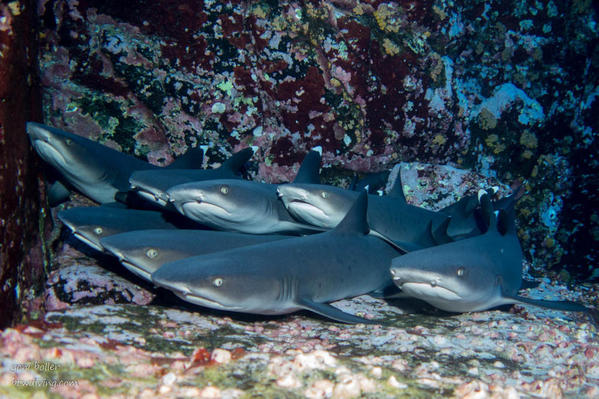 (White Tip Reef Sharks)
(White Tip Reef Sharks)Further away from the rock we encountered a school of hammerheads but we did not have a chance to get close to it. As the humpback whales have already left Roca Partida we decided to leave as well and head to Socorro which was another 112 km (70 mi) away.
Socorro is bigger than the other islands and greener. We started our dives at a place called Punta Tosca which was a little disappointing at first. However, at the end of the first dive a hammerhead approached our group and on the second dive two mantas joined us just at the end of our 50 minutes. The third dive of the day we spent at Roca O’Neil. Hovering over white stones originated by ash feels like diving on the moon.
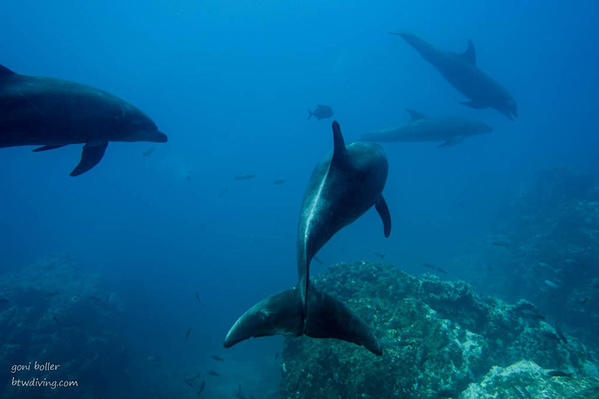 (Bottlenose Dolphins)
(Bottlenose Dolphins)As a bonus to the stunning dive site a group of dolphins came to play with us. Playing and swimming with dolphins is very exhausting so I ran out of air after 10 minutes with them and had to end the dive (ok, we also reached the 50 minutes but without another group of divers around and dolphins playing I’m sure we could have found a bit more time for them). On our way to the next dive we saw humpback whales close by and decided to try to snorkel with them instead of diving. We were all prepared sitting with our fins and mask on, snorkel in, approaching the two adult whales with a calf. Our dinghy driver shouted “go go go” but we all sat and waited… “go go go” he tried again! Still no one was moving. Only when our guide confirms “go” we started to jump in. I was somehow waiting for the boat to go closer to the whales but have no clue what the rest were waiting for. Maybe the “one, two, three” we normally get when we have to jump in for dives?
The moment I touched the water I started swimming as fast as I could towards the whales. And then I saw white, and more white – that must be the bellies of one of the adults and the calf. Then I can see the silhouettes! I am actually in the water with big huge humpback whales. ![]() Overwhelmed by the sight I forgot to keep on swimming while still screwing the wide angle lens to my camera and of course then the whales were gone…. But wow, I’ve seen them. Still I would love to see them that close again during a dive.
Overwhelmed by the sight I forgot to keep on swimming while still screwing the wide angle lens to my camera and of course then the whales were gone…. But wow, I’ve seen them. Still I would love to see them that close again during a dive. ![]()
On our next day in Socorro we tried to find whales again so the people who did not see the earlier whales could snorkel with them as well. However, we were not lucky. Instead we did three exploratory dives at a new dive site where we did not know what we would encounter. We were very lucky and found a manta cleaning station early on during the first dive and spent most of the time there.
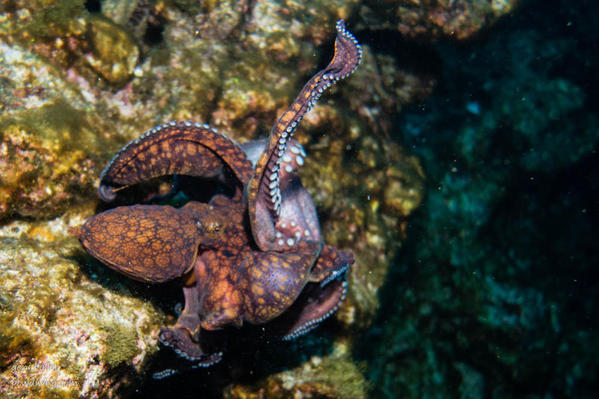 (Fighting Octopus)
(Fighting Octopus)On the last dive of the day I saw two octopus fighting. A very surprising and unexpected sighting as we were only paying attention to the “big stuff”. There are many other smaller animals to be found during the dives in the Revillagigedo Archipelago like lobster, moray, schools of different fish and rays. Between two dives we took a boat ride along the island to a beach with a single palm tree, maybe the only tree on Socorro. On the way back we saw whales again and tried to snorkel with them again. This time I only caught a very short glimpse on one as the only person on the boat. Unfortunately these were the only encounters with whales. We were just too late in the season, I might have to come back again in February or March!
The last night we navigated back to San Benedicto which is only 56 km (30 mi) away from Socorro so we arrived there in the middle of the night. The weather was not as nice as the last days with stronger winds, higher waves and a cloudy sky. After a rather rough entry at the Boiler we spent the last two dives of our trip in the canyon diving with mantas again. The last day was full with beautiful encounters with dolphins and mantas. During the second dive 7 giant oceanic mantas circled our group to swim up to divers, play with us and pose for our pictures. What a wonderful end of an amazing trip!
I have been asked a lot how the diving in Socorro compares to the diving in Cocos Island (Costa Rica) and Galapagos (Ecuador). For encounters with mantas and dolphins Socorro is definitely the place. I did see dolphins in Galapagos but from far away, they were not interested in divers. The only interaction with marine life as close and intimate as with the mantas and dolphins in Socorro was with the sea lions in Galapagos.
I don’t think it is possible to compare these three regions in the Pacific as they have very different marine life. Cocos is definitely the best for sharks and it is just about sharks. I would say it is the one place to see big (200+) schools of hammerheads. In both Cocos and Galapagos the sharks came much closer to the divers and I’ve seen more big sharks there than in Socorro.
So I couldn’t pick a favourite and would be happy to go back to all 3 places.

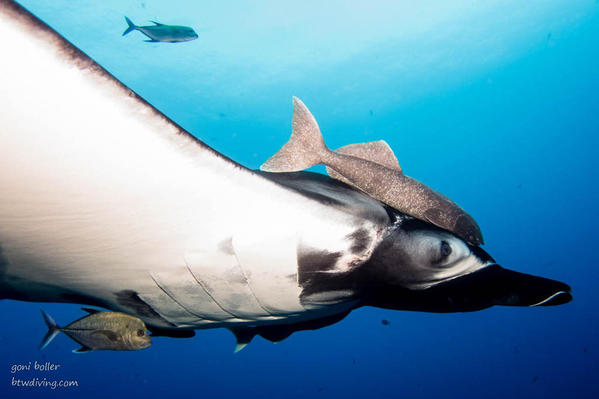
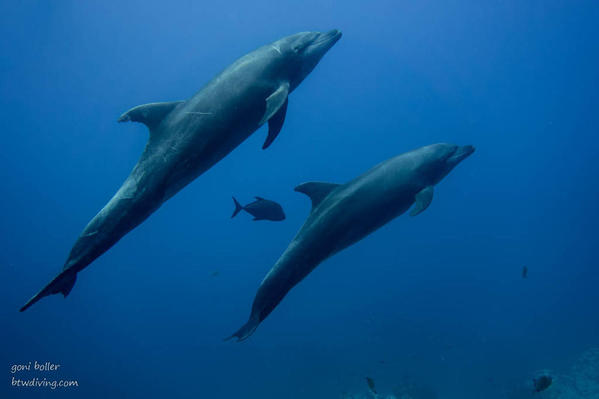
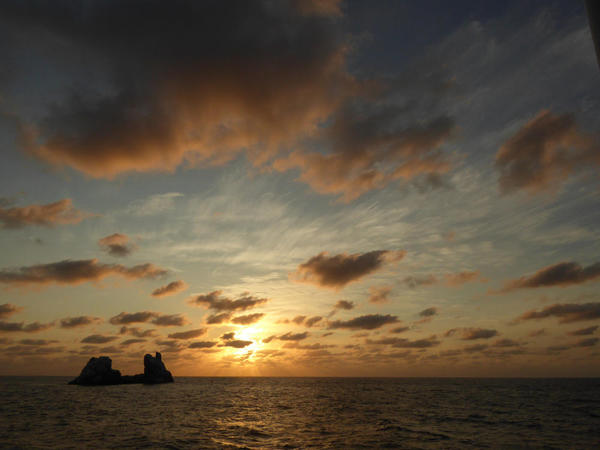
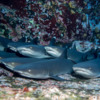
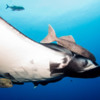
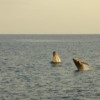
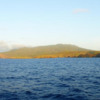
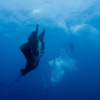
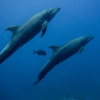
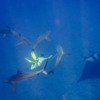
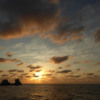
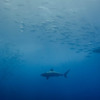
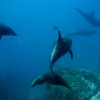
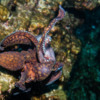
Comments (3)